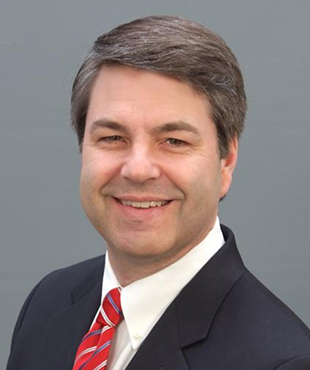

By Mark A. Behrens and Christopher E. Appel, attorneys in Shook, Hardy & Bacon L.L.P.’s Washington, D.C.-based Public Policy Group and authored an amici curiae brief in support of the Brown defendant on behalf of numerous New Hampshire and national business and civil justice groups. Mr. Behrens is a member of Washington Legal Foundation’s Legal Policy Advisory Board.
* * *
The New Hampshire Supreme Court is the latest state high court to reject a tort claim for medical monitoring in the absence of a present physical injury. The court held in Brown v. Saint-Gobain Performance Plastics Corp., 2023 WL 2577257 (N.H. Mar. 21, 2023), “the mere existence of an increased risk of future development of disease is not sufficient under New Hampshire law to constitute a legal injury for purposes of stating a claim for the costs of medical monitoring as a remedy or as a cause of action in the context of plaintiffs who were exposed to a toxic substance but have no present physical injury.”
Brown involved a putative class action by individuals allegedly exposed to PFOA in contaminated water and soil in the vicinity of a manufacturing facility. The claimants sought funds to monitor for the development of a range of potential health issues, including high cholesterol, thyroid disease, ulcerative colitis, testicular cancer, kidney cancer, immunotoxicity, and pregnancy induced hypertension. The medical monitoring issue reached the New Hampshire Supreme Court on a certified question from a federal district court.
The New Hampshire Supreme Court said that its “well-established precedents” hold that the “possibility [of injury] is insufficient to impose any liability or give rise to a cause of action.” (Emphasis in original). As the court explained, a “right of action for negligence accrues only when the plaintiff has suffered an injury,” and “an increased risk of harm is not an injury.” The court also rejected claimants’ public policy arguments for recognition of a medical monitoring claim. The court cited Governor Chris Sununu’s 2020 veto of medical monitoring legislation that, he said, threatened to “open the floodgates to new, less severe claims which would divert resources from those who truly need them.”
With Brown, the New Hampshire Supreme Court joins a growing list of state high courts that have rejected adopting a cause of action for medical monitoring for claimants with no present injury.1 The courts appreciate that awarding medical monitoring to the non-sick raises serious public policy concerns, including the potential for unlimited and unpredictable liability and for unimpaired claimants to exhaust resources that may be needed to compensate sick claimants in the future. See Victor E. Schwartz et al., Medical Monitoring – Should Tort Law Say Yes?, 34 Wake Forest L. Rev. 1057 (1999) (discussing significant problems surrounding medical monitoring awards absent physical injury).
In 2020, the Illinois Supreme Court, in Berry v. City of Chicago, 181 N.E.3d 679 (Ill. 2020), rejected a proposed class action against the City of Chicago on behalf of all city residents seeking the establishment of a trust fund to monitor for potential injuries related to lead exposure from the city’s antiquated water lines. The court explained that maintaining tort law’s present physical injury requirement “establishes a workable standard for judges and juries who must determine liability, protects court dockets from becoming clogged with comparatively unimportant or trivial claims, and reduces the threat of unlimited and unpredictable liability.”
Decisions rejecting medical monitoring draw support from the U.S. Supreme Court’s decision in Metro-North Commuter R.R. Co. v. Buckley, 521 U.S. 424 (1997), where the Court rejected a medical monitoring claim under the Federal Employers’ Liability Act for railroad workers occupationally exposed to asbestos. The Court appreciated that “tens of millions of individuals may have suffered exposure to substances that might justify some form of substance-exposure-related medical monitoring.” Defendants could be subjected to unlimited liability and a “flood of less important cases” could drain the pool of resources available for meritorious claims by plaintiffs with serious injury. The Court explained that even modest monitoring costs can add up to significant sums over time, especially where claimants assert the need for lifetime monitoring. The Court also expressed concern that medical monitoring claims could create double recoveries because alternative sources of monitoring are often available, such as employer-provided health plans. In addition, the Court acknowledged many practical difficulties in implementing and administering medical monitoring programs. These considerations, the Court concluded, supported rejecting a “new, full-blown, tort law cause of action.”
Buckley marked an inflection point in medical monitoring jurisprudence. Since Buckley, state high courts considering the issue have rejected medical monitoring causes of action by around a two to one margin.2
New Hampshire’s rejection of medical monitoring comes only a few months before the American Law Institute (ALI) will convene at the organization’s annual meeting in May 2023 to consider endorsing a medical monitoring remedy for the unimpaired in the final part of the Restatement of Torts, Third.3 The ALI’s controversial proposed medical monitoring rule recommends that courts follow a minority approach allowing claimants with no present bodily harm to recover costs to monitor for the possibility of developing a future injury.4 New Hampshire’s rejection of medical monitoring, which furthers the case law trend since Buckley, provides additional support against the ALI’s proposed approach.
Notes
- See Berry v. City of Chicago, 181 N.E.3d 679 (Ill. 2020); Caronia v. Philip Morris USA, Inc., 5 N.E.3d 11 (N.Y. 2013); Lowe v. Philip Morris USA, Inc., 183 P.2d 181 (Or. 2008); Paz v. Brush Engineered Materials, Inc., 949 So. 2d 1 (Miss. 2007); Henry v. Dow Chem. Co., 701 N.W.2d 684 (Mich. 2005); Wood v. Wyeth-Ayerst Labs. Div. of Am. Home Prods., 82 S.W.3d 849 (Ky. 2002); Hinton v. Monsanto, 813 So. 2d 827 (Ala. 2001); Badillo v. Am. Brands, Inc., 16 P.3d 435 (Nev. 2001); Mergenthaler v. Asbestos Corp. of Am., 480 A.2d 647 (Del. 1984); see also Sinclair v. Merck & Co., Inc., 948 A.2d 587 (N.J. 2008) (limiting effect of earlier ruling allowing medical monitoring).
- See supra n. 1. Post-Buckley decisions adopting a medical monitoring cause of action include Donovan v. Philip Morris USA, Inc., 914 N.E.2d 891 (Mass. 2009) (cause of action for subcellular changes); Meyer ex rel. Coplin v. Fluor Corp., 220 S.W.3d 712, 717-18 (Mo. 2007); Bower v. Westinghouse Elec. Corp., 522 S.E.2d 424 (W. Va. 1999); see also 12 Vt. Stat. Ann. § 7202; cf. Sadler v. PacifiCare of Nev., Inc., 340 P.3d 1264, 1272 (Nev. 2014) (item of damages); Exxon Mobil Corp. v. Albright, 71 A.3d 30 (Md. 2013) (same); but see Ratliff v. Mentor Corp., 569 F. Supp. 2d 926, 928-929 (W.D. Mo. 2008) (“Meyer does not support medical monitoring claims in garden variety products liability cases….”). Before Buckley, several courts allowed such claims. See Redland Soccer Club, Inc., v. Dep’t of the Army, 696 A.2d 137 (Pa. 1997); Potter v. Firestone Tire & Rubber Co., 863 P.2d 795 (Cal. 1993); Hansen v. Mountain Fuel Supply Co., 858 P.2d 970 (Utah 1993); Ayers v. Township of Jackson, 525 A.2d 287 (N.J. 1987).
- See Restatement of Torts, Third: Miscellaneous Provisions (unnumbered section) (Am. L. Inst., Council Draft No. 3, Sept. 2022).
- See Mark Behrens & Christopher Appel, American Law Institute Proposes Controversial Medical Monitoring Rule in Final Part of Torts Restatement, Vol. 87 No. 4 Def. Counsel J. (Oct. 2020).
